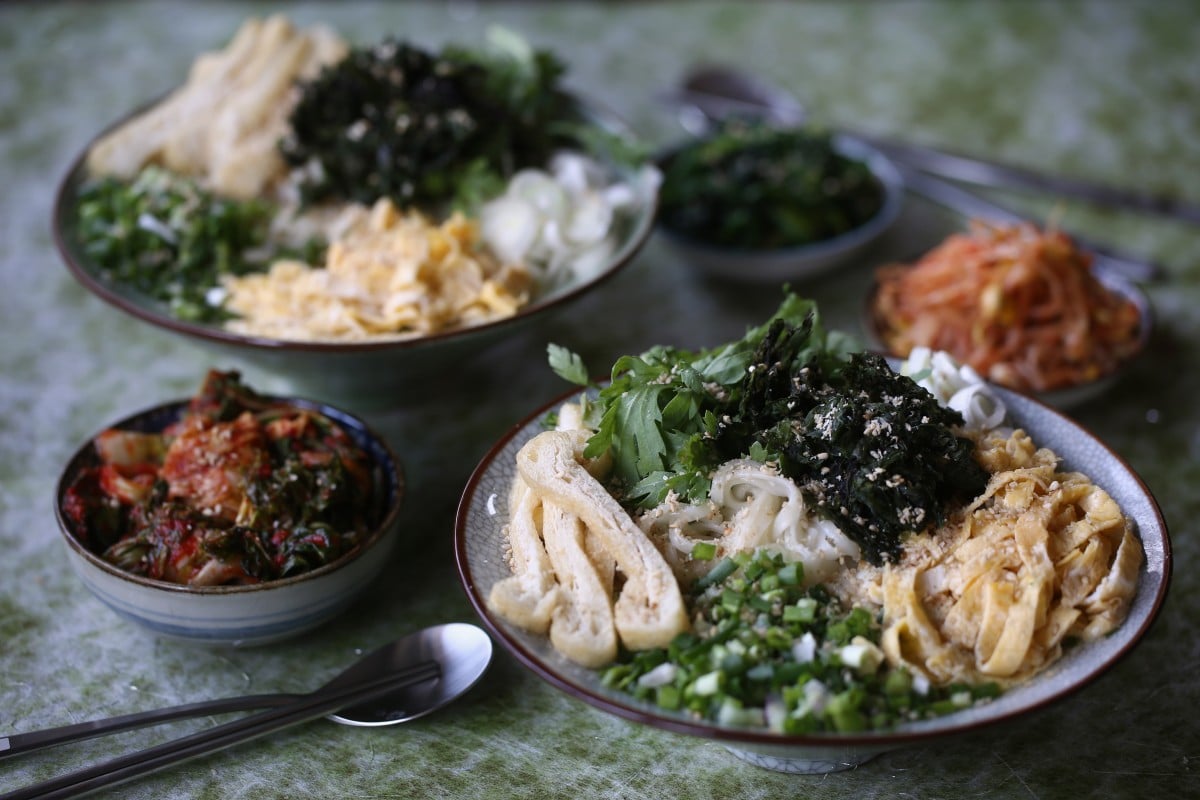
This vegetarian dish was inspired by something I saw being made on South Korean travel-reality show Kang’s Kitchen. I don’t speak Korean, nor can I read it, so I might be wrong about the ingredients they used. But when I recreated the dish, it turned out to be light in flavour, hearty and delicious. The dish can be made vegan by omitting the egg crepe.
Like many soups, this one depends on a good broth. But vegetarian broths can be insipid, so I use my trusty standby: dashi bags, or yuksu, as they're known in Korean. I always have a variety of these umami-rich instant broth bags (they look like tea bags) in my pantry; for this dish, use a vegetarian version, usually made of dried mushrooms and/or other vegetables.
Abura-age is Japanese deep-fried bean curd – it is the type that can be stuffed with rice or other ingredients. It is sold in packs. Japanese leeks are more tender and slightly smaller than European leeks. If unavailable, use the white part of a European leek. Edible chrysanthemum leaves, also known as crown daisy, are sold in Korean, Japanese and Chinese vegetable shops. If you can't find any, omit them.
When most people hear the word “nori”, they think of the thin, shiny sheets of seaweed that are used to make maki sushi (rolls) or onigiri (rice balls), or finely shredded and put on rice and cold noodles, and used in furikake (rice sprinkles). Those types are too thin for this dish and will wilt too quickly in the hot broth. If possible, buy the frilly, uneven shreds of roasted nori that resemble large, dark green (or green-black) tea leaves.
If you are going to serve kimchi and banchan (side dishes) with these noodles, be sure they are vegetarian – some producers add fish sauce and/or seafood.
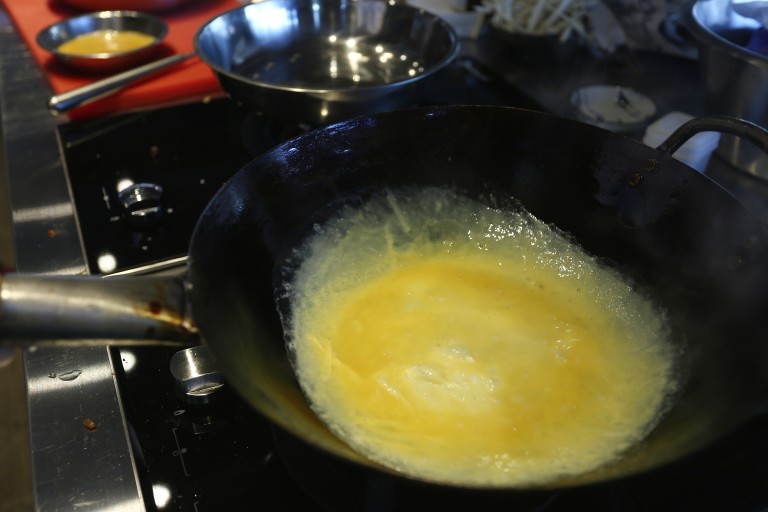
Whisk the eggs in a bowl. Heat a well-seasoned large skillet over a medium-high flame, then pour in about 5ml (1tsp) of cooking oil and use a paper towel to rub it into the metal to coat it lightly. Add half the whisked egg into the skillet and immediately tilt and swirl the pan so the egg coats it in a thin layer. (It’s fine if it’s not evenly round, because it’s going to be shredded anyway.) Let the egg cook for a minute or two, adjusting the heat as necessary so it doesn’t brown on the bottom. It is ready when the crepe is matte on the surface and the edges are starting to pull away from the pan. Lift the crepe out of the pan and lay it on a plate. Make the second crepe the same way, oiling the skillet first, if necessary. Leave at room temperature until cool enough to handle.
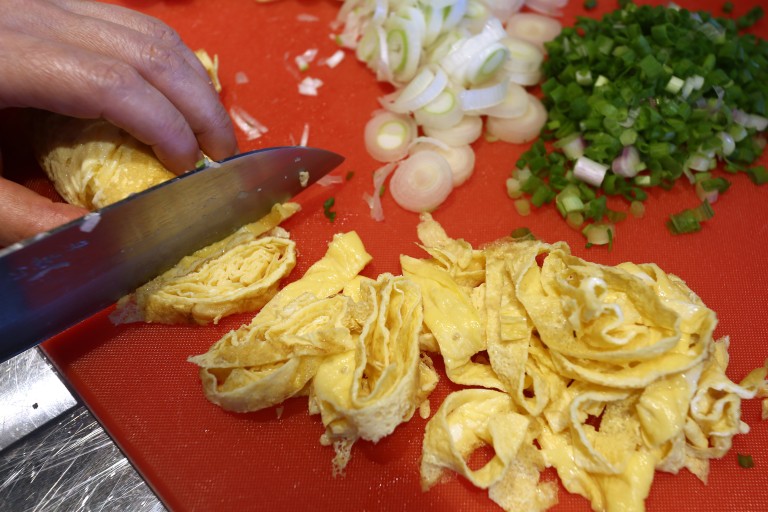
Stack the crepes, then roll them loosely and cut into thin shreds. Unroll the pieces and set them aside.
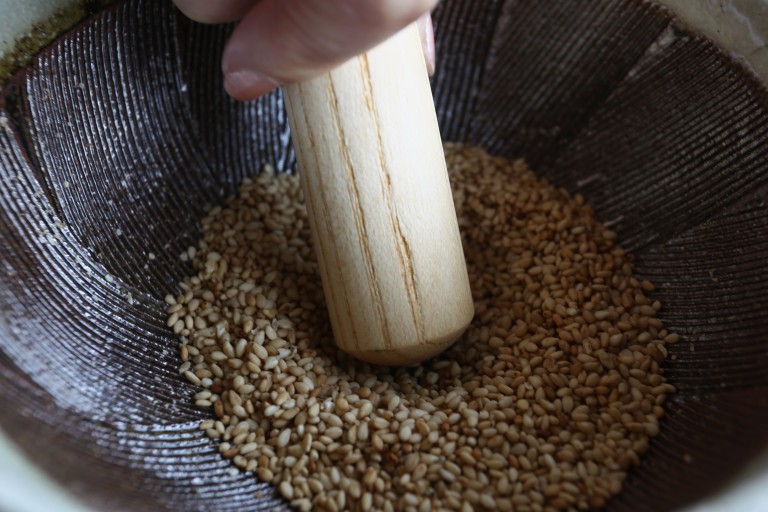
Put the sesame seeds in a dry (unoiled) small skillet placed over a medium-low flame. Shake the pan constantly to toast them until they darken slightly and are fragrant. Watch them carefully because they burn easily. Cool to room temperature, then grind to a rough powder in a mortar, preferably a suribachi (Japanese mortar with a ridged interior).
Thoroughly rinse the Japanese leek, then trim off the root end. Thinly slice the leek. Trim off and discard the root ends of the spring onions. Cut the spring onions into thin rounds. Stack the two pieces of Japanese fried bean curd (abura-age) and slice about 5mm (¼ in) thick.
Bring a pot of water to the boil, add the noodles and cook for about three minutes, or until done. Drain, rinse with hot water then drain again.
Put the dashi bags into the pot used to cook the noodles. Add 750ml (3 cups) of boiling water and steep for two minutes. Remove the dashi bags and squeeze out the liquid before discarding them. Heat the dashi over a medium flame until simmering.
Divide the noodles between two deep bowls. Pour in enough dashi to cover the noodles.
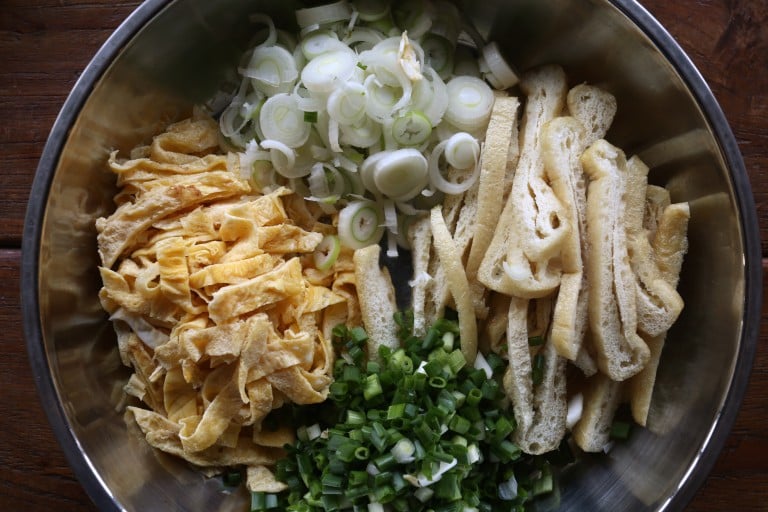
Place the bean curd (abura-age) in a pile into each bowl, then add the crepe, Japanese leek and spring onion. Add a handful of chrysanthemum leaves, then a small handful of the seaweed (nori), placing each ingredient in separate piles. Sprinkle the ground sesame seeds over the ingredients and serve immediately.